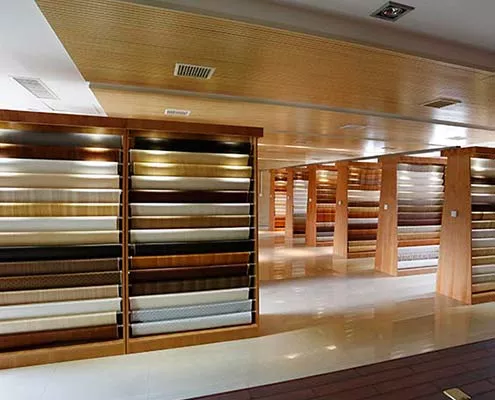
Decorative papers are a crucial part of many design projects, whether it be a book cover, gift wrapping, or a decorative touch on an interior design project. Selecting the right raw materials is essential to achieving the desired outcome. In this blog, we will explore the art of raw materials selection for high-quality decorative papers.
The first step in selecting raw materials for high-quality decorative papers is to understand what qualities they should possess. The raw materials should be strong and durable enough to withstand the rigors of printing and handling. They should also have excellent formation properties, which help ensure consistent printing results. They should be able to absorb ink, solid colors, and varnishes without bleeding or cockling. Lastly, they should have a consistent texture and be free from any blemishes that may cause printing issues.
Once the characteristics of a good decorative paper have been established, the next step is to choose the raw materials. One of the most common raw materials used in decorative paper production is wood pulp. Wood pulp has long fibers that provide a strong base for paper production. It’s also readily available and cost-effective, so it’s a popular choice for decorative papers.
Cotton linters
Another popular raw material is cotton linters. Cotton linters are the short fibers that remain on cotton seeds after the longer fibers are removed for textile production. These fibers are fine and have excellent formation properties, making them ideal for printing on decorative papers. They’re also naturally acid-free, which makes them a favorite for archival papers.
Silk fibers
Silk fibers are also commonly used in decorative paper production. Silk adds an elegant texture and luster to decorative papers and is prized for its delicate beauty. However, silk is expensive, so it’s typically reserved for high-end production.
Others
In recent years, many paper manufacturers have started using alternative fibers like hemp, bamboo, or other plant-based sources. These fibers offer unique textures and are often more eco-friendly than traditional wood pulp fibers. However, they can be more challenging to source and more expensive than traditional fibers, so they’re not as commonly used for decorative papers.
Once raw materials have been selected, the manufacturing process can begin. Manufacturers will usually pulp the raw materials, then remove any impurities or spent chemicals. The resulting fiber pulp is then distributed evenly on a conveyor belt. The evenly distributed pulp is then fed into the papermaking machine, where it’s spread out, pressed, and dried. After drying, the paper is inspected for imperfections such as wrinkles, holes, or other blemishes.
In conclusion, selecting raw materials for high-quality decorative papers is an art form that requires careful consideration, expertise, and experience. The right combination of raw materials will produce a decorative paper that is durable, beautiful, and consistent.
Understanding the characteristics of high-quality decorative papers is the first step in choosing the right raw materials. The four most common raw materials used in decorative papers are wood pulp, cotton linters, silk fibers, and alternative fibers. Each of these raw materials has its unique characteristics and is best suited for specific decorative papers. By selecting the right raw materials and using the right manufacturing techniques, manufacturers can create decorative papers that are both durable and beautiful.
